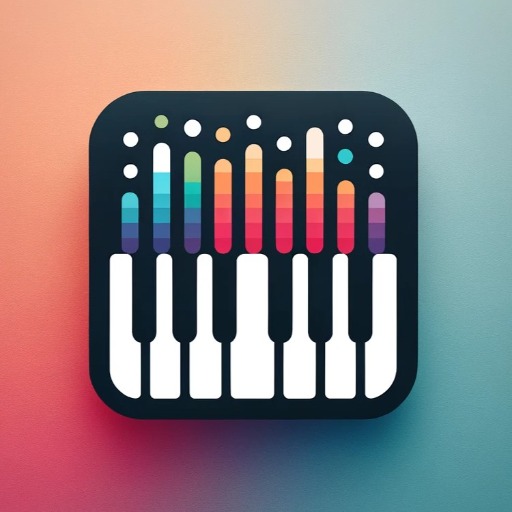Music Theory-Music Theory learning and analysis.
AI-powered music theory insights.
Expert in music theory, reads/writes notes, analyzes compositions. The Chord Creator feature is a must try!
Start your Journey with Music Theory 101: Scales.
How do Chords work in Jazz vs. Pop Music?
Generate Unique Chords in Midi with Chord Creator.
Can you transcribe this audio into sheet music?
Related Tools

Song Maker
Create music using musical theory. Discover essential songwriting tips to compose music and create songs. This GPT can produce chord progressions, musical notes, song lyrics, soundtracks and album covers.

Music Teacher
Regular ChatGPT isn't great at music theory and relative scales, so I trained Music Teacher to be an expert in all things music! Theory, scales, production, arrangement/composition, genres, VSTs, DAWs, piano, guitar, percussion, marketing and more! Also i

Music Maestro
A personalized music creation assistant for enthusiasts and creators.

Music Nerd
Enthusiastic and knowledgeable music history expert.

Song Finder
Identifies songs from clips on Instagram, TikTok, and more.

Music Guide
Music theory and composition guide.
20.0 / 5 (200 votes)
Introduction to Music Theory
Music Theory is a field of study that examines the elements of music and how they interact. It includes the analysis of melody, harmony, rhythm, form, and texture, among other components. Music Theory provides the framework for understanding how music works, enabling musicians to create, interpret, and analyze compositions with a deeper understanding. This field serves both as a theoretical foundation and a practical guide for musicians, composers, and music enthusiasts. For example, understanding the circle of fifths can help musicians in modulating between keys during composition or improvisation, providing a structural approach to harmony and key relationships.

Main Functions of Music Theory
Analysis of Compositions
Example
Analyzing a Bach fugue to understand its contrapuntal structure.
Scenario
A music student is tasked with analyzing a complex piece of music. By applying music theory principles, they can break down the piece into its constituent elements, such as identifying the use of counterpoint, harmonic progressions, and thematic development. This analysis helps in understanding the composer's techniques and the emotional impact of the music.
Composition and Arrangement
Example
Using music theory to create a jazz chord progression.
Scenario
A composer is working on a new piece in a jazz style. They apply knowledge of extended chords, modes, and common jazz progressions (like ii-V-I) to develop a sophisticated harmonic structure. This ensures the composition adheres to the stylistic norms of jazz while allowing for creativity and personal expression.
Improvisation
Example
Applying scale theory to improvise over a blues progression.
Scenario
During a live performance, a guitarist needs to improvise over a 12-bar blues progression. By understanding the relationship between scales and chords, they can choose appropriate scales (such as the minor pentatonic or blues scale) that fit the chord changes, resulting in a coherent and expressive solo.
Ideal Users of Music Theory
Music Students and Educators
Music students and educators are primary users of music theory as it forms the foundation of their studies and teaching. Students use music theory to understand the technical aspects of the pieces they are learning or composing, while educators rely on it to structure their lessons and provide a deeper understanding to their students.
Composers and Arrangers
Composers and arrangers benefit greatly from music theory, as it provides the tools needed to create complex and compelling music. By understanding the rules and conventions of harmony, counterpoint, and form, they can craft pieces that are both innovative and structurally sound. Music theory also aids in arranging existing works for different ensembles or voices.

How to Use Music Theory AI
Visit aichatonline.org for a free trial without login, also no need for ChatGPT Plus.
Access the website to explore the tool without needing to log in or subscribe to any premium service. This step is designed to make it easy to begin using Music Theory AI immediately.
Familiarize Yourself with the Interface
Once on the platform, take a few minutes to explore the interface. Understand where key features like the note editor, analysis tools, and chord progression generator are located for easier navigation.
Input Your Query or Composition
You can type in a question related to music theory, input musical notation, or upload a document. The tool supports a wide range of music theory-related tasks, from chord identification to advanced analysis.
Analyze and Modify
Review the output provided by the tool. Make adjustments or ask follow-up questions if necessary. This interactive process allows you to refine your understanding or composition iteratively.
Utilize the Export and Share Features
After finalizing your analysis or composition, you can export the results in various formats or share them directly with others, ensuring a smooth workflow integration.
Try other advanced and practical GPTs
Graph Theory
AI-powered graph theory for real-world solutions.

DnDGPT - Full Canvas Battle Map Maker
AI-powered full-canvas battle map creator.

Design Sequence Diagram & Implement
AI-powered sequence diagrams and API code generation.

Plagarism Remover
AI-powered Rephrasing for Plagiarism-free Content

Watermark Remover
AI-Powered Image Watermark Remover.

Remove AI plagiarism
AI-powered originality for your content.

Theory of Computation
AI-powered insights into computation theory.

Meeting Summary and Action Item Specialist
AI-powered summaries and action items in seconds.

Hand-drawn illustration GPT
AI-powered doodle creator for everyone

Progress Note
AI-powered therapy note generation tool.

Scientific Article Summarizer
AI-powered tool for precise scientific summaries.

Scientific Writing Assistant
Elevate your scientific writing with AI.

- Learning
- Analysis
- Performance
- Teaching
- Composition
Music Theory AI: Common Questions and Detailed Answers
How can Music Theory AI assist with learning music theory?
Music Theory AI provides detailed explanations, interactive examples, and real-time feedback on music theory concepts. Whether you're a beginner or advanced learner, it can help clarify topics like scales, chords, and harmony with personalized guidance.
Can Music Theory AI analyze and correct my compositions?
Yes, it can analyze your compositions, identify errors or areas for improvement, and suggest modifications. The tool is designed to provide comprehensive feedback on various aspects of music theory, including harmony, melody, and rhythm.
What types of musical notation does Music Theory AI support?
The tool supports standard musical notation, chord symbols, and can interpret MIDI files. This versatility allows you to work with a variety of musical formats seamlessly.
Is Music Theory AI suitable for professional musicians?
Absolutely. While it caters to learners, the tool also provides advanced analysis features for professional musicians, composers, and educators. Its ability to offer in-depth insights into complex compositions makes it a valuable resource in professional settings.
How can I integrate Music Theory AI into my teaching curriculum?
Music Theory AI can be used to supplement classroom instruction with interactive exercises, real-time feedback, and detailed analysis. It's an excellent resource for demonstrating theory concepts and allowing students to experiment with music creation in a guided environment.